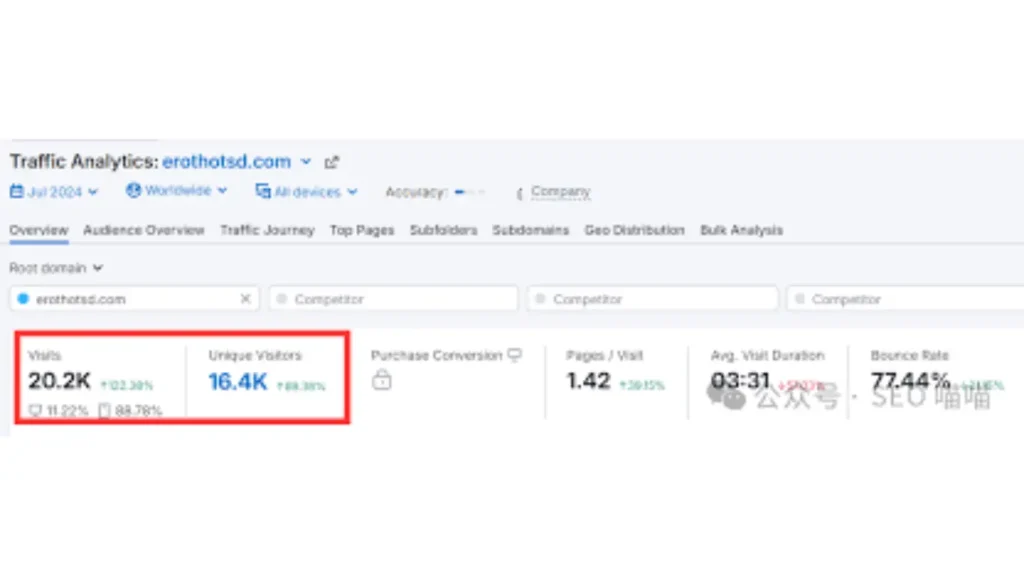In the constantly evolving world of SEO, website owners and digital marketers face numerous challenges. One such challenge is the decline in subfolder网站外链和引荐域.
Many webmasters have observed a significant drop in backlinks and referring domains pointing to their website subfolders. This shift has raised concerns, leading to questions about the possible causes and solutions.
What Are Subfolders, and Why Are They Important for SEO?
A subfolder is a directory within a website that contains specific content. For example, in the URL https://www.example.com/blog/seo-tips, “blog” is a subfolder. Subfolders are crucial for website organization, helping users navigate content efficiently and enabling search engines to understand site structure better.
From an SEO perspective, well-structured subfolders can improve user experience (UX), increase topical authority, and consolidate ranking power.
However, when backlinks and referring domains to these subfolders start declining, the impact on search visibility can be severe.
Why Are Backlinks and Referring Domains Important?
Backlinks are incoming links from external websites to your domain, while referring domains are the unique sites that provide these links. High-quality backlinks from authoritative sources signal trustworthiness and improve search rankings. A sudden drop in these metrics can negatively impact your website’s SEO performance.
Possible Reasons for the Decline in Subfolder网站外链和引荐域
Google Algorithm Updates
Google frequently updates its algorithms, which can affect backlink profiles. The latest Helpful Content Update and spam link policies may have caused a devaluation of certain backlinks.
Loss of Link Equity
If referring domains remove links, switch to no-follow tags, or change URLs without redirects, your link equity can diminish.
Content Relevance Decline
If content in the subfolders is outdated or no longer valuable, other sites may stop linking to it.
Competitor Growth
Competitors might be attracting backlinks from your sources by publishing better content or engaging in more aggressive link-building strategies.
Website Redesign or Migration Issues
Changes in URL structure without proper 301 redirects can lead to a loss of backlinks.
Spammy or Low-Quality Backlinks Removed
Google’s recent crackdown on low-quality backlinks may have resulted in the removal or devaluation of unnatural links.
How to Recover and Strengthen Subfolder Backlinks
1. Perform a Backlink Audit
Use tools like Google Search Console, Ahrefs, or SEMrush to analyze lost backlinks. Identify trends in lost referring domains and create a recovery strategy.
2. Optimize Content for E-E-A-T
Google emphasizes Experience, Expertise, Authoritativeness, and Trustworthiness (E-E-A-T). To improve your backlink profile, ensure that:
- Content is authored by experts or contains expert insights.
- You cite authoritative sources and provide accurate data.
- Your website displays clear author and business credentials.
3. Update and Refresh Old Content
- Revise outdated posts with new information.
- Improve readability and user engagement.
- Add multimedia (images, infographics, videos) to enhance shareability.
4. Reclaim Lost Links
- Reach out to webmasters who removed links and request reinstatement.
- Use 301 redirects for any changed or deleted URLs.
5. Engage in Ethical Link-Building Strategies
- Publish high-quality guest posts.
- Build relationships with industry influencers.
- Utilize digital PR strategies to earn organic backlinks.
6. Internal Linking Optimization
- Strengthen subfolder authority by interlinking relevant pages.
- Ensure internal links use descriptive anchor text.
7. Leverage Social Media and Content Distribution
- Share subfolder content on LinkedIn, Twitter, and industry forums.
- Encourage user engagement and discussions.
Emotional Connection with Users
Google values user experience more than ever. To connect with readers emotionally:
- Understand user intent: Why are they searching for this topic?
- Share real experiences: Personal stories build trust.
- Engage users with interactive content: Videos, quizzes, and case studies increase time on page.
Conclusion
The decline in subfolder网站外链和引荐域 can stem from multiple factors, including Google updates, content quality, and competitor advancements.
However, by adopting E-E-A-T principles, optimizing for NLP, and implementing robust link-building strategies, you can recover lost backlinks and reinforce your website’s authority. Remember, success in SEO lies in creating helpful, user-focused content that earns backlinks naturally.
FAQs
1. Why are my subfolder backlinks disappearing?
This can result from algorithm updates, content irrelevance, lost referring domains, or technical website changes.
2. How can I improve my website’s E-E-A-T?
Focus on expertise, cite authoritative sources, and enhance trust signals like author credentials and transparency.
3. What role does NLP play in SEO?
Google uses NLP to understand context, meaning, and relevance. Using semantic keywords improves search rankings.
4. How can I regain lost backlinks?
Perform a backlink audit, update content, reach out to lost referring domains, and strengthen internal linking.
5. Are subfolders better than subdomains for SEO?
Generally, subfolders consolidate domain authority, making them preferable for SEO unless a subdomain serves a distinct purpose.


